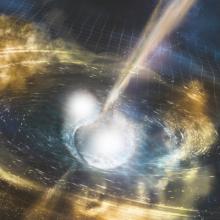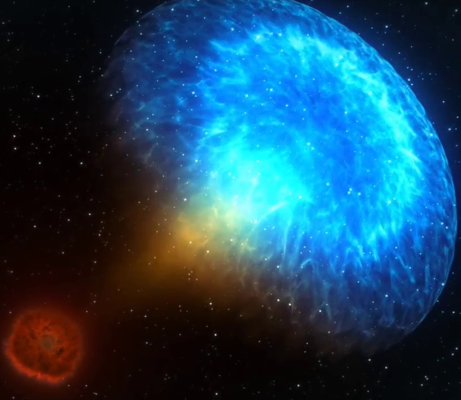
When large stars many times more massive than the sun exhaust their nuclear fuel, they eventually collapse and produce a supernova, an explosion that can be observed across the cosmos. In many cases, the explosion will leave behind a neutron star, a collapsed stellar core that will have a mass larger than the sun with a radius of less than 10 miles across. These are the densest objects in the universe not found inside black holes. They can spin incredibly rapidly, rotating in fractions of a second, and when they have large magnetic fields can be seen as pulsars, beaming radio waves into space like a lighthouse.

In cases where two large stars are in a binary, both can undergo supernovae leaving behind a pair of neutron stars in orbit around each other. We have observed many binary systems containing pulsars, from the initial observation in 1974 of PSR 1913+16 (the numbers describe it's position on the sky) that won the Nobel Prize for Hulse and Taylor to the present day. One system, PSR J0737-3039, even consists of two pulsars in orbit around each other. These systems do not just emit electromagnetic radiation, but gravitational radiation as well. These gravitational waves take away energy from the system, forcing the stars to orbit closer and closer together. Eventually, they will merge, a process LIGO observed as GW170817. This was the first multimessenger astrophysics source that combined gravitational waves with electromagnetic observations -- the merging neutron stars also produced a kilonova, or weak gamma-ray burst powered by the radioactive decay of heavy elements produced during the merger of the neutron stars.
Here at the CCRG, we study many aspects of binary neutron star mergers. Professor Campanelli leads the TCAN Network comprising experts in the fields of theoretical and computational astrophysics, is poised to complement these observational successes with the most thorough and complete effort in the field to simulate binary neutron star coalescences from prior to merger through to the formation of disks and/or collapse of the merged remnant, the production of jets, and launching of outflows














